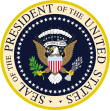President's Committee on Equality of Treatment and Opportunity in the Armed Services
| President's Committee on Equality of Treatment and Opportunity in the Armed Services | |
 | |
| History | |
|---|---|
| Established by | Harry S. Truman on July 26, 1948 |
| Disbanded | May 22, 1950 |
| Related Executive Order number(s) | 9981 |
| Membership | |
| Chairperson | Charles Fahy |
| Other committee members | Alphonsus Donahue Lester Granger Charles Luckman Dwight R.G. Palmer John H. Sengstacke William E. Stevenson |
| Jurisdiction | |
| Purpose | Examine the practices of the armed forces and suggest measures to guarantee equality of treatment and opportunity |
| Policy areas | Civil rights |
| Summary | |
| |
The President's Committee on Equality of Treatment and Opportunity in the Armed Services, or the Fahy Committee[1] was formed by President Harry S Truman as part of Executive Order 9981.[2] This committee consisted of Charles Fahy as chairman and six other members, two of whom were African-American. The committee's main purpose was to oversee successful racial integration of the US Armed Forces.[3]
President Truman abolished the commission on July 6, 1950, on what he termed successful completion of integration in the armed forces.
Membership
[edit]The committee consisted of the following 7 members:
- Charles Fahy (chairman), former Solicitor General of the United States
- Alphonsus J. Donahue, businessowner from Connecticut
- Lester Granger, president of the National Urban League
- Charles Luckman, president of Lever Brothers
- Dwight R. G. Palmer, president of the General Cable Corporation
- John H. Sengstacke, publisher of The Chicago Defender
- William E. Stevenson, president of Oberlin College
However, Alphonsus Donahue died in July 1949 and Charles Luckman was not active in the committee, reducing the number of members who submitted the committee's final report to 5.[4]
Report
[edit]The committee's findings were published in their final report Freedom to Serve: Equality of Treatment and Opportunity in the Armed Services on 22 May 1950. The committee argued that segregation was detrimental to the military's efficiency, in contrast to the claims of pro-segregation officials including the Secretary of the Army, Air Force, and Navy.[5][6]
References
[edit]- ^ Dalfiume, Richard (1969). Desegregation of the U.S. Armed Forces. p. 175.
- ^ "Executive Order 9981". Retrieved 11 November 2017.
- ^ "Archived copy". Archived from the original on 2010-06-23. Retrieved 2010-07-02.
{{cite web}}: CS1 maint: archived copy as title (link) - ^ The President’s Committee on Equality of Treatment and Opportunity in the Armed Services (22 May 1950). Freedom to Serve: Equality of Treatment and Opportunity in the Armed Services. Washington, D.C.: United States Government Printing Office. p. VII-XII.
- ^ Taylor, John E. (2013). Freedom to Serve: Truman, Civil Rights, and Executive Order 9981. New York: Routledge. pp. 100–101. ISBN 9780415894494.
- ^ "Statement of Honorable Kenneth C. Royall, Secretary of the Army, Before the President's Committee on Equality of Treatment and Opportunity in the Armed Services" (PDF). Harry S. Truman Presidential Library and Museum. 22 March 1949. Retrieved 31 July 2018.
